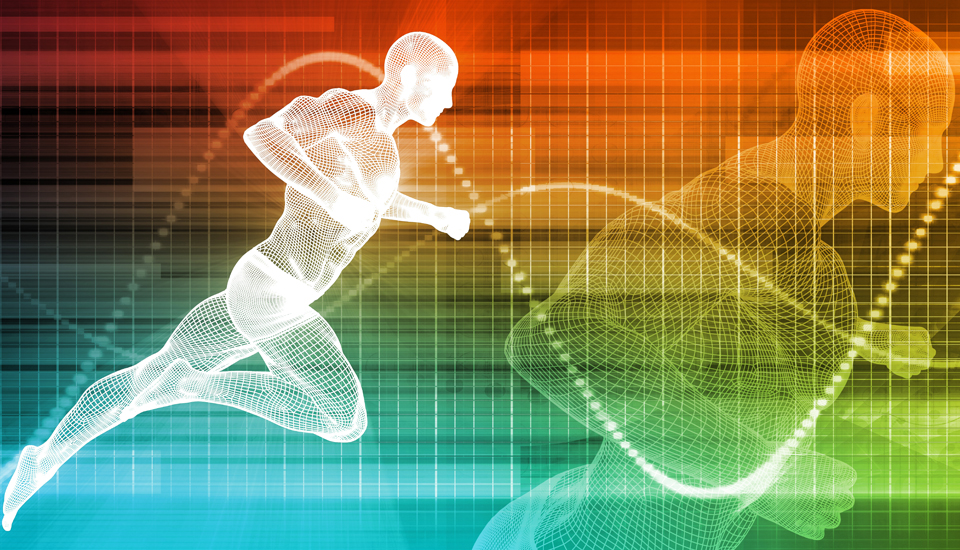NAD+, NADH and NAD IV therapy from Toronto: How Are They Different?
POSTED ON JULY 12, 2022 BY TORONTO FUNCTIONAL MEDICINE CENTRE

Many patients are curious about NAD IV therapy from our Toronto clinic. But after they do personal research, some patients wonder this:
How are NAD+, NADH and NAD different from one another?
Good question! Well, they’re all still considered to be NAD, but the difference between some of the acronyms is how NAD is processed in the human body.
NAD is a molecule that the body needs for cellular functioning. NAD is a key component for optimizing brain function, cell health replenishment, cardiovascular health, muscle health, metabolism, and immune function.
Unfortunately, NAD levels naturally deplete in the body as we age, leaving us vulnerable to DNA damage, cellular damage, cognitive decline, and memory loss as we enter the golden years.
It’s possible though for NAD supplementation to provide health benefits, such as DNA repair, detoxification, anti-aging effects, and an improvement in energy levels, mental performance, and cell vitality. NAD IV therapy for recovering from substance abuse may also be beneficial. It could even assist with deferring the onset of age-related diseases.
Thus, knowing the distinction between NAD+, NADH and NAD could be valuable for you when making decisions about therapy treatments. In this blog post, the Toronto Functional Medicine Centre explains the disparities between these acronyms and how to get NAD IV therapy from our clinic.
Functional Medicine Approach: What do NAD, NAD+ and NADH mean?
First thing’s first: NAD is short for nicotinamide adenine dinucleotide. When it needs to be generally described, it’s simply called “NAD.”
NAD+ is an oxidized version of NAD, and it’s also a precursor to any chemicals that require NAD for chemical reactions. In contrast, NADH is the reduced form of NAD that is combined with oxygen. It becomes this way because the NAD+ molecule undertakes hydrogen atoms, which transforms into NADH, the reduced form of NAD.
Together, NAD+ and NADH undergo a unique cycle of events, passing hydrogen atoms back and forth like a kicking a ball. Here’s how this cycle works: After NAD+ is inserted into a cell, hydrogen atoms collect onto NAD+, which then transition into NADH. Then, NADH transforms into NAD+, and the cycle continues over again.
When you don’t have enough NAD+ in the body, this cycle cannot fully occur and it could induce mitochondrial dysfunction. Replenishing NAD+ in the body could help with this cycle, while possibly lessening the effects of chronic fatigue and enhancing brain health. In fact, “NAD+ boosters have shown efficacy in a variety of mouse models of human disease, prompting numerous clinical trials of NAD+ boosters in humans,” confirms an article from the journal Cell Metabolism.
If you’re interested in taking NAD, you should know that there’s a difference in the absorption of nutrients between oral supplements and IV therapy (intravenous drips). Oral NAD precursors supplements (i.e. capsules) need to be absorbed prior to NAD reaching your bloodstream; this means that you lose a substantial amount of NAD due to the digestive process. It also means you could lose some of NAD’s health benefits simply because of the absorption process.
NAD IV therapy allows for a solution with NAD+ to automatically bypass the digestive tract. An IV drip with NAD+ is inserted into your vein, which allows for complete absorption into the blood flow. Thus, a functional medicine provider could help determine if NAD IV therapy is suitable for your health goals.
The process for getting NAD IV therapy
NAD IV therapy can be conducted through an IV therapist or accredited functional medicine provider. But before you try intravenous therapy, your practitioner must establish if NAD IV therapy is applicable for you. For example, at the Toronto Functional Medicine Centre, first-time IV patients can expect this routine:
- An initial NAD consultation (a 45- to 60-minute health assessment) is conducted to get to know you, your family and medical history, lifestyle and environmental factors, etc. Blood work will be discussed to determine what you’re deficient in.
- After lab results are analyzed, our functional medicine health care providers can customize your IV slow drip bag, which could include NAD+ and/or other vitamins for promoting optimal functioning.
- On the first day of your intravenous infusion therapy drip, a compounded NAD drip is customized with fresh ingredients. You’ll be comfortably seated and our staff will connect your vein to the IV drip.
- Now you can sit back and allow the absorption of nutrients to quickly flow through your body.
Is a fuzzy memory blocking you from optimal health? Find out at our Yorkville-based clinic and, together, we’ll customize your NAD functional medicine treatments to help boost energy, cognitive performance, and cellular functions.
How to book your NAD IV session at our clinic
NAD intravenous therapies are currently available at the Toronto Functional Medicine Centre and new patients are welcome.
Our functional medicine health care providers can tailor therapies for different health concerns, such as nutritional deficiencies, chronic fatigue syndrome, hormone imbalances, oxidative stress, substance overindulgence, chronic stress, thyroid conditions, and more. We can also assist you with a functional medicine program that is suitable for your personal needs.
Consultations are conducted in-person or virtually for chronic or acute health issues. Next to NAD IV therapy, we offer other intravenous therapies that could contain a high dose of glutathione, high-dose vitamin C, folic acid, mistletoe, a medley of amino acids for energy, or other essential vitamins.
Are you ready to upgrade your wellness? Let’s get to the root of your brain fog and inflammation today. Click here to contact us for your free DISCOVERY SESSION on NAD IV therapy in Toronto.
Disclaimer: The information in this article is designed for educational purposes only and is not intended to be a substitute for informed medical advice or care. This information should not be used to diagnose or treat any health problems or illnesses without consulting a doctor. Consult with a health care practitioner before relying on any information in this article or on this website.
References:
Belenky P., Bogan K.L. and Brenner C. (2007) NAD+ metabolism in health and disease. Trends Biochem. Sci. 32, 12–19 https://doi.org/10.1016/j.tibs.2006.11.006[PubMed]
Braidy N., Lim C.K., Grant R., Brew B.J. and Guillemin G.J. (2013) Serum nicotinamide adenine dinucleotide levels through disease course in multiple sclerosis. Brain Res. 1537, 267–272 https://doi.org/10.1016/j.brainres.2013.08.025[PubMed]
Camacho-Pereira J., Tarrago M.G., Chini C.C.S., Nin V., Escande C., Warner G.M. et al. (2016) CD38 dictates age-related NAD decline and mitochondrial dysfunction through an SIRT3-dependent mechanism. Cell Metab. 23, 1127–1139 https://doi.org/10.1016/j.cmet.2016.05.006[PubMed]
Castro-Marrero, J., Cordero, M. D., Segundo, M. J., Sáez-Francàs, N., Calvo, N., Román-Malo, L., Aliste, L., Fernández de Sevilla, T., & Alegre, J. (2015). Does oral coenzyme Q10 plus NADH supplementation improve fatigue and biochemical parameters in chronic fatigue syndrome?. Antioxidants & redox signaling, 22(8), 679–685. https://doi.org/10.1089/ars.2014.6181
Grabowska W., Sikora E. and Bielak-Zmijewska A. (2017) Sirtuins, a promising target in slowing down the ageing process. Biogerontology 18, 447–476 https://doi.org/10.1007/s10522-017-9685-9[PubMed]
Lin Q, Zuo W, Liu Y, Wu K, Liu Q. NAD+ and cardiovascular diseases. Clin Chim Acta. 2021 Apr; 515:104-110. Doi: 10.1016/j.cca/2021.01.012. Epub 2021 Jan. 21. PMID: 33485900.
Okabe K., Yaku K., Tobe K. and Nakagawa T. (2019) Implications of altered NAD metabolism in metabolic disorders. J. Biomed. Sci. 26, 34 https://doi.org/10.1186/s12929-019-0527-8[PubMed]
Rajman, Luis et al. “Therapeutic Potential of NAD-Boosting Molecules: The In Vivo Evidence.” Cell metabolism vol. 27,3 (2018): 529-547. doi:10.1016/j.cmet.2018.02.011

